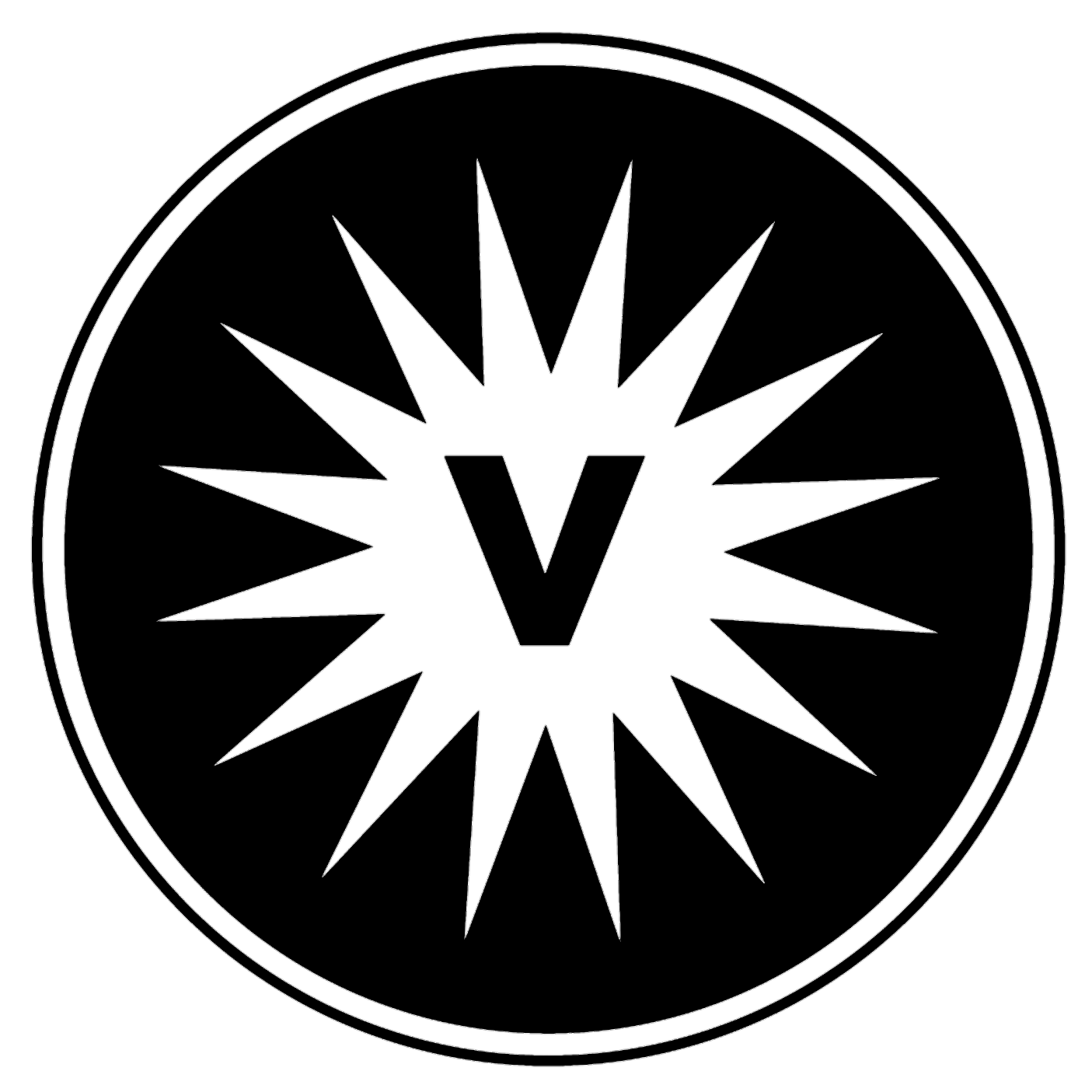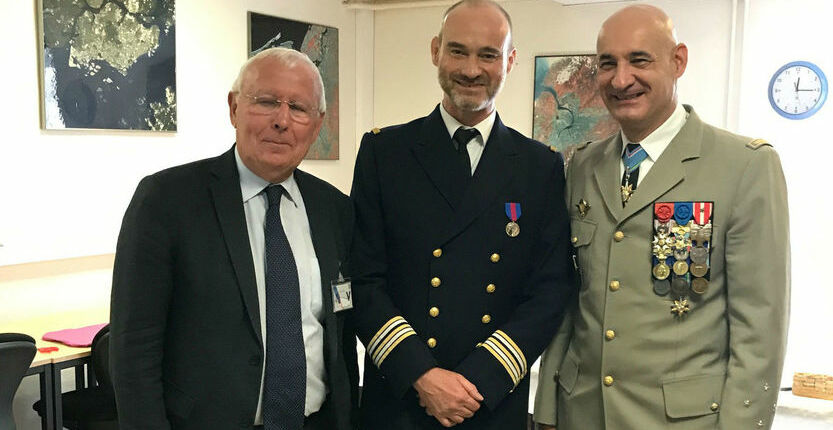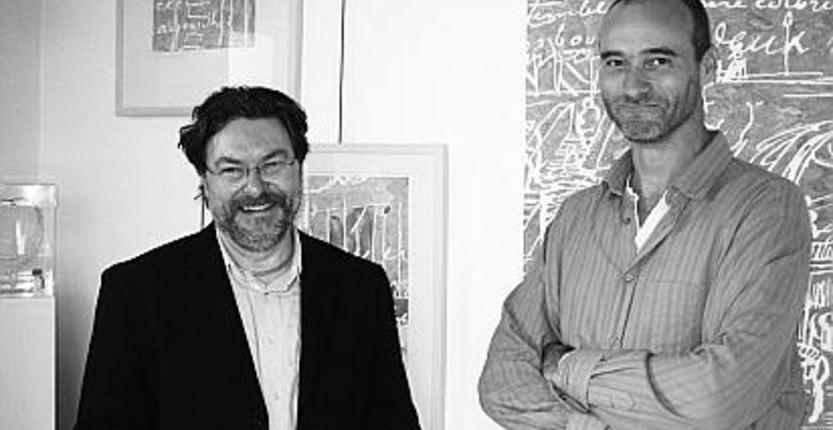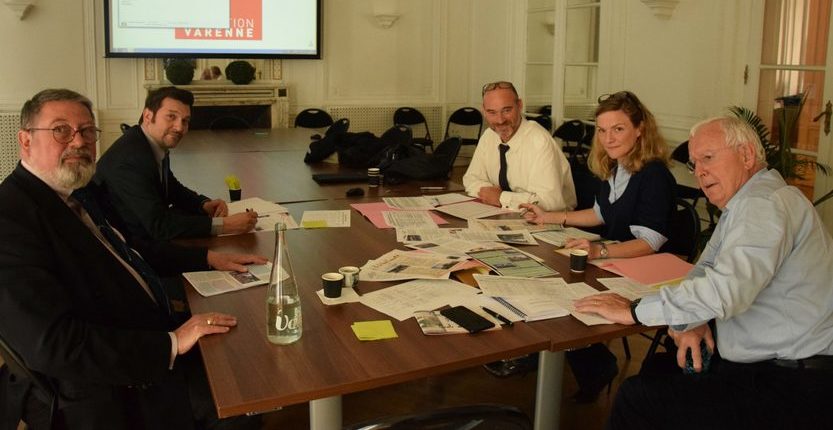Vertigo of the mirror, abyss of self, for David Boulanger by Frédéric Jonnet
Vertigo of the mirror, abyss of self,
For David Boulanger.
A quick approach would probably rank him among the painters of the new figuration. But to speak of realism as far as it is concerned is like saying nothing.
If we are content with the most immediate, the most ostensible, we have here an art of reference, of quotation, of the watermark: Van Eyck, Vinci, Manfredi, Velasquez, Courbet, Monet, Van Gogh, Mondrian, others without doubt, with a special mention for Caravaggio, direct source of a dozen works. It is the whole history of Western painting that unfolds before our eyes, marked by a series of “essential” masterpieces, almost clichés for tourists in a hurry : The Mona Lisa, The Man with the Blue Hood, Raising Sun Impression …
If the allusion is not yet clear enough, the titles come to help us, so transparent in their ironic contrariety that they work like a riddle: thus, Impression, rising sun becomes Impression, setting sun. If one sticks to the inspired examples of Caravaggio, the Boy bitten by a lizard becomes the Boy bitten by nothing ; Little Bacchus sick, Little Bacchus cured; David triumphant, Goliath conqueror; while Salome receiving the head of the Baptist becomes Saint John the Baptist winner. Other titles are even more basic to decipher : The Blue hat to the man, The Red turban to the man, The Leather belt to the man …
Of course it is necessary to make the room for derision in such a practice. Thus of these two twin canvases, Boy bitten by nothing and Boy very bitten, where we pass “logically” from one to another by “ablation” of the hands, so we must imagine having been devoured by some mastiff : dubious joke of student of Fine Arts in search of originality? What can we say about these different abstract figures, who like to superimpose on a Mondrian reduced to the role of “wallpaper”, a very concrete motive, shirtless or simple “sweatshirt” with hood, whose laces hang through their carnations: again impertinence, disrespect or, to a certain extent, vandalism ? Unless this close-up anatomy or this hanging garment, private, one of his integrity (his head), the other of his function (clothe), both somehow emptied of their substance and their reason to be, become pure abstractions …
One has the right to feel assaulted first, and it is obviously wanted, by what could be only a brilliant hoax (if indeed the shock in art can be free!). There is probably still the spirit of the Dadas, with their games of denial of the established order, whether logical (exquisite corpses) or figurative (Duchamp’s Urinal, the Bull’s Head of Picasso). Moreover, the legend L.H.O.O.Q.I which serves as the title of the various evocations of our national Mona Lisa is a direct reference to the L.H.O.O.Q. (she has hot ass !) Which entitled the Mona Lisa mustache Duchamp. It remains to know what the eruption of the final I means: perhaps it is simply the I of IQ, which would be an additional grimace for this Mona Lisa without a head !
So, malicious wink certainly, but also, perhaps, challenge, exercise style, even virtuosity, how to measure against the masters. In fact, the work of Boulanger raises the question crudely: how far can we go in reproduction avoiding pure pastiche ? Admit that the fidelity to Caravaggio of his Sacrifice of Isaac, or his very Sulpician Mary Magdalene at the Sepulcher, aroused. Difficult, in the face of an admission of deference and allegiance so direct and sincere, to stick to the thesis of mystification. The company seems to be more of demystification, of desecration, with its trompe-l’oeil and its trap-traps, founding an art, more elaborate than it seems, deconstruction, perversion, transgression, even inversion, as in the titles that express it.
An inversion that is often simple but sometimes even multiplied to the vertigo, as in Narcissus, according to Caravaggio again, which returns the figure of the young man and his reflection in relation to the original, giving these four twin motifs a crossed symmetry that is not without disturbing our landmarks in space. Or as in Saint, according to the Meditation of Saint Francis of the same, where a kneeling body, without a head, seems to address his own skull, which he holds in his hands. Or finally in Saint John the Baptist winner, where Boulanger is limited to the right half of the painting of the master, with the figure of the executioner tending to Salome the head of his victim: then appears only an athletic body impossible to identify (Is it the holy decapitated but standing and triumphant ? The title of the work invites this interpretation) brandishing his empty arm in a sort of Roman salvation at least incongruous.
Thus, as long as we linger, beyond the play on words and forms, it seems that we have in our artist, as with Satie (which claimed the surrealists besides), a question on being, a quest for identity as a representation but also as a reference, whether it is plastic or ontological: after all, Baker does not distort our heritage of painting so much as it disfigures it, in the sense where he denies him what usually characterizes him. As evidenced by its almost systematic erasure of faces, the postulate of anonymity but also the desire to withdraw from the agreed expression of features to focus on the more spontaneous and therefore more authentic, the movement of bodies, to reach there a kind of epure proper to sculpture or dance, and thus, paradoxically, a certain quality of abstraction. So, do not be surprised if the faces, if they appear, are at home most of the time obscured (The Man with the bomb, Portrait of Protogene), frozen in the state of skull (the different Vanities, Heads field, Saint or Velasquez), a joke of a potache (Portrait of Toto) or … gluteus in close-up of his callipyge Voisine !
Far from coming to contradict her, portraiture on the contrary pushes this logic to the point of absurdity, limiting representation to the “side” of the person: thus in the series of white-collar workers, each referring to a profession. that it must be enough to distinguish (the Art Dealer, the Trader, the Lawyer, the Journalist). Of the model itself we will know nothing more: young or old, handsome or ugly, bearded, bald, smiling, with or without glasses … What does it matter if it captures the essential? From this point of view we can say that for Boulanger, in the strict sense, it is the costume that makes the man, without, moreover, that he weighs this statement of a condemnation, as is the case with Pascal . It remains to be seen where this essence of being resides: in the Eunuch, a paunchy torso in a tank top, it is, once again, the head that is missing !
An exception, however, particularly significant, to this ellipse of the representation, not of the human but of the person: the exercise, almost obsessional at home, of the self-portrait, this objectification of the self, this reification of the features, this search almost morbid, which can degenerate into schizophrenia and which brings his approach (or, to a certain extent, his bill, as is reflected in some of the tormented backgrounds of the Portrait of a Man) closer to that of Van Gogh. In both, no complacency, no narcissism in the look-scalpel that dissects up to distort and ends up removing all humanity to what should be its substance: the man in blue, puffy by the proximity of the point of view, as through a peephole, or the Young man with the raised hand, whose disturbing attitude irresistibly recalls the incubus in the Füssli’s Nightmare.
Moreover, the rupture is only apparent between portraits of the other and portraits of oneself; Is not one of these last titles the Metque, that is, the foreigner? Some are amputated by half, either vertically or horizontally; on another, the features of the face merge into a swirling Sunflowers-style decor. Better, two paintings, a bill a little different it is true, serve as a binding, two self-portraits shirtless “with hair”, the Green Giant and self-portrait by hand, which are each doubled a version … without head ! Finally, the Portrait by itself even offers no alternative: the painter puts in his blouse stained with colored spots that have splashed as far as the collar. But above, again, there is nothing: “sun, cut neck”.
Now, traditionally at least, the face is the murderer of the soul, which both illuminates and protects it. If there is no perceptible soul in all these figures, uniformly scorned, petrified, detached from all “psychological” rendering, no more than in these fragments of nothing the painter has only sketched, elusive, the end of his brush is that, in one case, the face is “given to us”, without more, in the other, it is “given to us to imagine”: for the two therefore, it is it is up to us to go beyond appearance in order to find, to re-know, by an effort of introspection, the essence of what is presented, and which, once more, is none other than human , that is to say, ourselves.
The human : this is indeed the paradox of Boulanger, who seems to constantly run away from the expression without ever being able to detach, turning around like filings on a magnet. The man is his source of almost exclusive inspiration and we find in him few landscapes, although they can also recommend famous references, even if, curiously, the disciple shows himself, with respect to the master , more free, maybe even more distant. The tribute to Monet, for example, does not stop at Impression, the setting sun, already mentioned (remember that Boulanger devoted an exhibition to him) : the different Aiguille d’Étretat refer of course to the series that the painter had dedicated the site, its beach and its cliffs, while its Wave evoke, although in a curiously impressionistic style, the famous print of Hokusai a copy of which, acquired by Monet, is preserved in Giverny (fascinating game of mirrors and influences, Baker retaking, but in the manner of Monet, the theme of the Japanese). Finally, the few canvases entitled Wheat Fields with Crows are obviously inspired by Van Gogh’s Wheatfield with Crows.
As for still lifes, they are also limited to a small thing: a monumental Bull skinned taken from Rembrandt (also “perverted” and therefore … sewn.) And a Butcher’s Crock of inspiration nearby. Even when he names a Cello, he represents only the instrumentalist (and vice versa, of course!). The only painting expressly given as “still life” is, rather cynically … a self-portrait, in fact a naked torso, without a head this one, which could actually recall, sinister evocation, a corpse suspended in a salt. Some may also feel some discomfort in front of these amputated bodies exposed to envy, these members atrophied, these fingers of lepers, exhibited as carcasses on a stall. Unless they are sublimated, like some carrion by Baudelaire …
Because it is not there that she resides, this suffering that one feels at home, in this almost palpable physical torture: Boulanger is not Bacon, in spite of the violence of the theme (sacrifice, murder, detachment). His aesthetic choices may even, on the contrary, mitigate the horror of the motive, for example in Abel and Cain (the title itself erases the idea of murder), according to Manfredi, where the impossibility of reading the expressions of the Faceless belligerents, combined with the absence of the weapon in the murderous hand, reduces the deadly body to a mere, almost sensual, battle scene. No, the disarray of the painter, everywhere obvious or nearly so, is undoubtedly more intellectual, expressing itself rather in the impossibility of grasping the deep reality of things and beings. From then on, the artist would be, in relation to the body, in the same relation of ingestion / digestion as vis-à-vis his illustrious elders, brother of the monstrous Saturn of Goya, that we are surprised by not to find torture in his gallery.
With him, what throbs deeply can only take root on the void, like an ivy on a rotting trunk. See the double example of the Little Bacchus who is just reborn when he disappears: on a first canvas where the child-god is presented to us as really sick, his naked body, headless, barely veiled, imposes his folded arm leaning on a table. All its traditional attributes, bunches of grapes, apricots, vegetable crown, yet present in the painting of Caravaggio that refers, have disappeared. We will only find them on the second canvas, when Bacchus is cured, while his body itself, now abolished in the shadows, resurfaces paradoxically, including the head, surrounded “hollow” by these symbols of life to which he seems to owe his forgiveness … and his graphic existence.
Let’s go further: with his Man with the leather belt, Courbet painted a young dandy turning his thoughtful gaze towards the spectator, leaning on a large, richly bound book, a thumb nonchalantly passed inside his belt. Once revisited in the Leather Belt to the man, the focal has changed: the character has faded, at least as such, that representation, that tangible reality. Remains the book, now abandoned, at least in appearance, and of course the belt, which becomes the central theme and justifies the inversion of the terms of the title.
The human figure is nothing more than evanescence, avatar, specter, reduced to what is not her but only the form she lives, namely her clothes. Not even a silhouette: a kind of presence-absence, an uninhabited or rather disembodied evocation. Here again, the contradiction is only apparent with the proliferation of bodies with powerful presence. Without straying into a dialectic of appearing and having, we must admit that in both cases the human exists only by the suggestion of his “being-there”, which remains to complete, to reconstruct : The essential of what constitutes it becomes emptiness, but a emptiness full like an egg of avowed credentials; admittedly rejected in the shadow of the painting, but strangely present through the intentions it manifests.
Therefore, we can no longer claim that Boulanger is a figurative painter: he is even the opposite since the essential part of the painting is precisely what is not there. By the anxiety he expresses through this aporia and under the guise of a willingly caustic humor, his art is obviously an existentialism; it is also, in spite of certain appearances, a humanism.
Frédéric Jonnet, February 22, 2010.
At the same time writer, critic and art lover, Frédéric Jonnet is also a doctor (p.h.d.) in political science, headmaster and seconded to the Ministry of Defense as a chargé de mission.
Currently at the Ty Art Show gallery for an exceptional exhibition on Van Gogh’s revisited correspondence (Le Télégramme).
Ty Art Show Gallery, 42, Place de la Chapelle in La Clarté.





